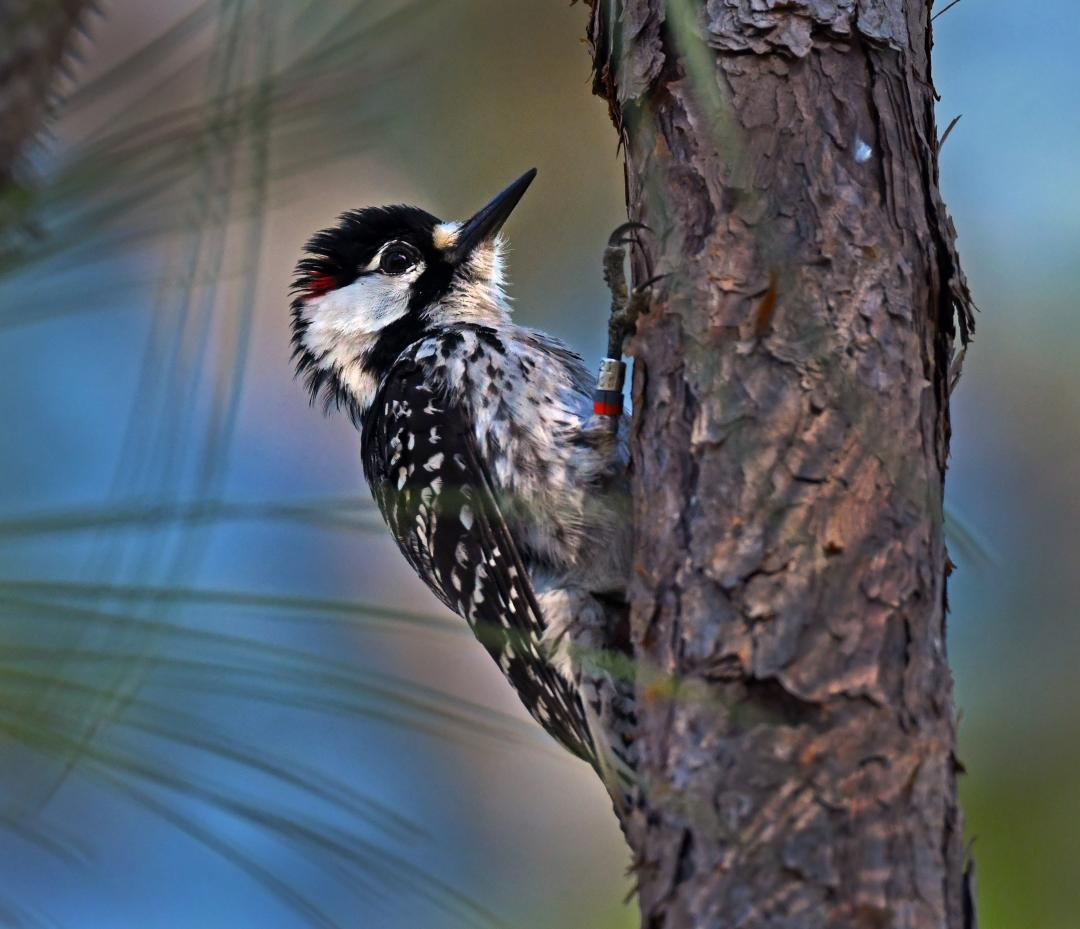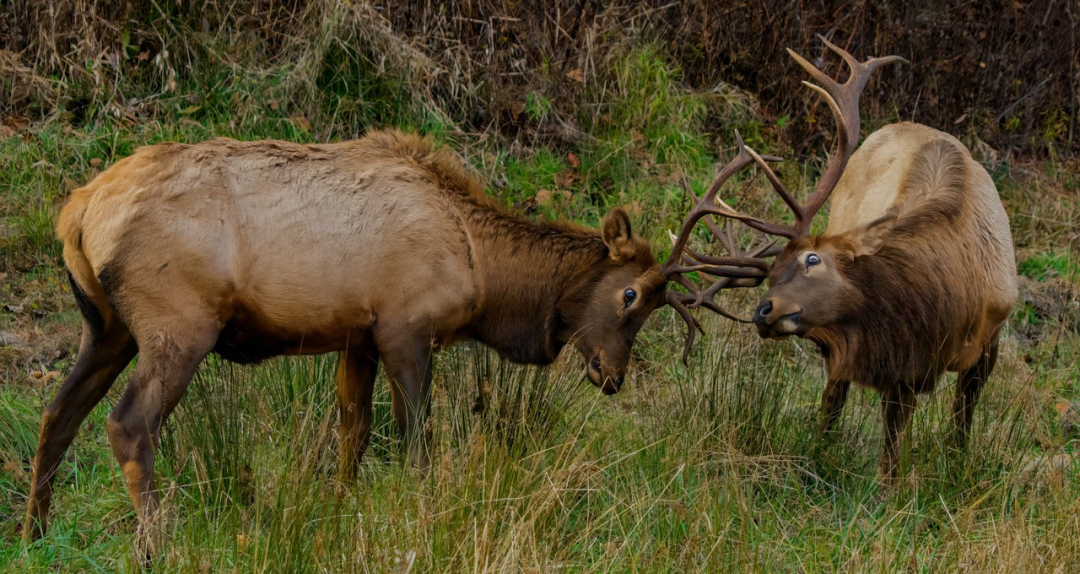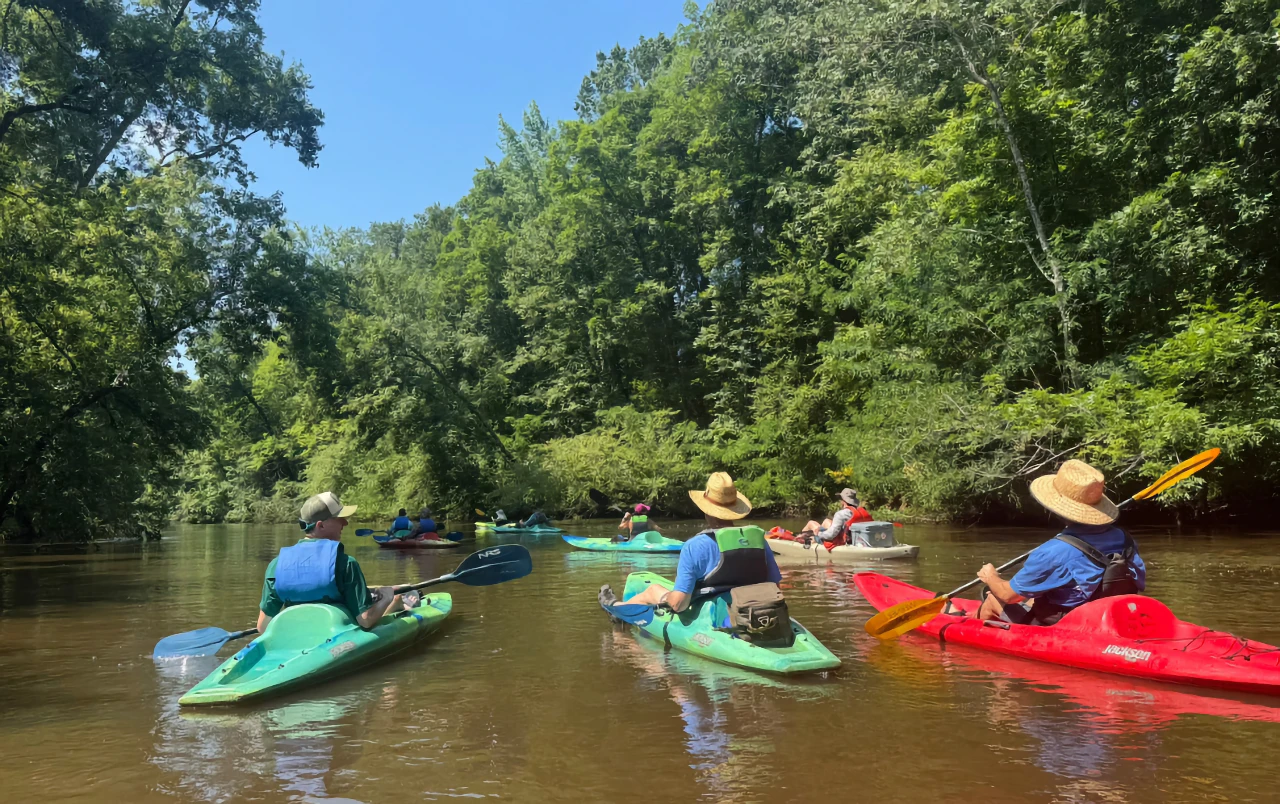News (808)
Children categories
ES! Initiatives (74)
EarthSolidarity!™ Initiatives are endeavors to which anyone can contribute in deed as well as in spirit, that
- minimize waste and environmental impacts
- increase community resilience
- respect and protect ecosystem processes and all forms of life
- contribute to good living conditions for everyone around the globe
- affirm and celebrate our interdependence and interrelatedness in the Web of Life!
Slowing the burn: Nine ET counties collaborate on climate plan
Written by Kristin Farley Hurricane Helene was fueled by unusually warm waters in the Gulf of Mexico before it began its deadly and destructive push into East Tennessee and Western North Carolina. Scientists said global climate change made the storm considerably worse than it would have been in natural conditions. East Tennessee leaders announced a regional climate plan focused on reducing local contributions to climate change. Thomas Fraser/Hellbender Press
Hurricane Helene was fueled by unusually warm waters in the Gulf of Mexico before it began its deadly and destructive push into East Tennessee and Western North Carolina. Scientists said global climate change made the storm considerably worse than it would have been in natural conditions. East Tennessee leaders announced a regional climate plan focused on reducing local contributions to climate change. Thomas Fraser/Hellbender Press
Plan suggests actions on public and private levels to slow warming climate
KNOXVILLE — Area leaders unveiled a plan to improve air quality, health and quality of life across the metro region.
Breathe: A Climate Action Plan for the Knoxville Region, released Nov. 12, is the result of a two-year collaboration, and is the region’s first comprehensive climate action plan.
The city collaborated with regional leaders and a working group of representatives from over 50 organizations across nine counties to help shape the plan’s goals and strategies, ensuring they reflect the region’s priorities and constraints.
The plan was funded through the U.S. EPA Climate Pollution Reduction Grant program, which the city of Knoxville was awarded in 2023.
Individuals can make personal climate pledges and find resources to help achieve them on the project website. The plan and all related materials, pledge, and list of resources can be found at www.knoxbreathe.org.
Smokies all-taxa counters make beeline for 2026
Written by Jaimie Matzko Jaimie Matzcko uses a smartphone to document plants and an insect community on the side of Mount LeConte in Great Smoky Mountains National Park during an outing to document life as part of the All-Taxa Biodiversity Inventory. Discover Life in America’s two-year strategic plan calls for a greater emphasis on insects, especially bees, in the national park. Thomas Fraser/Hellbender Press
Jaimie Matzcko uses a smartphone to document plants and an insect community on the side of Mount LeConte in Great Smoky Mountains National Park during an outing to document life as part of the All-Taxa Biodiversity Inventory. Discover Life in America’s two-year strategic plan calls for a greater emphasis on insects, especially bees, in the national park. Thomas Fraser/Hellbender Press
DLIA insect-heavy two-year strategic plan sparks next era of discovery for mountain life
Jaimie Matzcko is Discover Life in America communications coordinator.
GATLINBURG — Discover Life in America (DLiA), a non-profit organization committed to cataloging biodiversity and supporting science-based conservation in the southern Appalachians, announced its 2026–2028 strategic plan, and it’s heavy on the quest to better document the six-legged denizens of the Smokies.
This roadmap strengthens DLiA’s focus on leveraging decades of taxonomic research to impact conservation, education, and ecosystem resilience. Since 1998, DLiA has partnered with Great Smoky Mountains National Park to manage an All Taxa Biodiversity Inventory, a project that aims to document every species in the park.
The two-year-plan calls for the launch of the first native bee assessment in the national park “to assess bee health and drive their conservation.”
Oak Ridge recreation center stores power in ice

OAK RIDGE — The city is investing in a new cooling system for the Oak Ridge Recreation Center at 1403 Oak Ridge Turnpike.
The recreation center includes a game room with pool tables and arcade games, as well a gym and an indoor pool. In a news release, city government described the new cooling technology as innovative and “designed to improve operational efficiency, lower electricity costs, and reduce carbon dioxide emissions for the facility while supporting the growth of a local clean-tech company.”
That company is Shift Thermal and its system stores energy in the form of ice, made during off-peak hours when power is cheapest and cleanest.
“During the hottest parts of the day, when electricity demand and costs are at their highest, the stored ice supplements the building’s air conditioning, which then improves performance and reduces the strain on the power grid,” Shift Thermal CTO Mitchell Ishmael said in the news release.
The company uses an immiscible working fluid to circulate through the system, eliminating traditional ice-storage heat exchangers. This design simplifies installation, increases efficiency, and lowers costs for large-scale cooling systems, the news release stated.
-Ben Pounds
TWRA to sample deer for CWD at check-ins
NASHVILLE — The Tennessee Wildlife Resources Agency (TWRA) will be operating chronic wasting disease (CWD) sampling stations across the state on the opening day of the 2025 muzzleloader season, Saturday, Nov. 8, to monitor the presence of CWD in white-tailed deer populations. Hunters play a crucial role in this monitoring effort by bringing harvested deer to designated sampling locations.
CWD, a contagious and fatal neurological disease affecting deer, has been detected in 18 counties, all in West Tennessee except one positive county in Middle Tennessee (Lewis County). A complete list of counties where CWD has been detected and specific test locations is available at tnwildlife.org. By participating in CWD sampling, hunters can assist TWRA in early detection and prevent the disease from spreading.
-TWRA

Homecoming celebrates a story that ‘weaves across generations’
Cindy Hassil is Ijams Nature Center development director.
KNOXVILLE — Ijams Nature Center will celebrate 50 years of being a nonprofit organization dedicated to nature, education, and stewardship at an Ijams Homecoming on Saturday, Nov. 8, from 10 a.m.-2 p.m.
This free event will feature fun, hands-on activities for all ages, historic materials, guided hikes, refreshments, and more at the Ijams Visitor Center, 2915 Island Home Ave. in South Knoxville.
“This is a special milestone for Ijams Nature Center,” Ijams President and CEO Amber Parker said. “We’re celebrating 50 years of continuing the legacy of respect, wonder, and protection H.P. and Alice Ijams began more than a century ago when they bought 20 acres along the Tennessee River to raise their family.
Updated 11/3: Great Smoky Mountains National Park gets shutdown reprieve through Jan. 4
Written by Jim Matheny The crest of the Great Smoky Mountains is seen from the Foothills Parkway looking east. Thomas Fraser/Hellbender Press
The crest of the Great Smoky Mountains is seen from the Foothills Parkway looking east. Thomas Fraser/Hellbender PressLocal and state partners will continue funding park during shutdown; some critical work will be suspended
Jim Matheny is Friends of Great Smoky Mountains National Park communications director.
- government shutdown
- great smoky mountains national park
- friends of the smokies
- smokies funding
- smokies funding partnership
- is gsmnp closed?
- are the smokies closed?
- sevier county
- blount county
- state of tennessee
- is cades cove open
- government shutdown national parks
- gatlinburg
- smokies restrooms
- eastern band of cherokee indians
- jim matheny
TennGreen Land Conservancy expands Cumberland Trail
Written by Jon D. Bumpus  The cerulean warbler is among the bird species and others that will benefit from the latest land acquisition to expand the Cumberland Trail near the Emory River in Tennessee. Wikipedia Commons
The cerulean warbler is among the bird species and others that will benefit from the latest land acquisition to expand the Cumberland Trail near the Emory River in Tennessee. Wikipedia Commons
Nature Conservancy partners on Emory River watershed protection
WARTBURG — TennGreen Land Conservancy acquired about 58 acres near Wartburg to expand the Justin P. Wilson Cumberland Trail State Park and the Cumberland Trail. This important acquisition strengthens the long-term vision of connecting Tennessee’s first linear park from the Morgan County Visitor Center to Frozen Head State Park.
“TennGreen has long been committed to advancing the vision of the Cumberland Trail, and this acquisition represents an important step in enhancing trail connectivity while protecting ecologically rich lands,” said Alice Hudson Pell, TennGreen’s Executive Director.
The newly acquired property lies within several significant conservation planning areas, including the Catoosa, Frozen Head, and Upper Cumberland Areas of Interest (as designated by the Heritage Conservation Trust Fund) and the Catoosa/Emory River Conservation Opportunity Area. It also provides vital habitat for high-priority species including green salamanders (Aneides aeneus) and cerulean warblers (Setophaga cerulea).
Tennessee partners with feds to return red-cockaded woodpecker to rightful range
Written by Lee Wilmot
 The state of Tennessee is partnering with the U.S. Fish and Wildlife Service to reintroduce the red-cockaded woodpecker to the mixed-pine forests of the state. Renee Bodine/USFWS
The state of Tennessee is partnering with the U.S. Fish and Wildlife Service to reintroduce the red-cockaded woodpecker to the mixed-pine forests of the state. Renee Bodine/USFWS
The threatened woodpecker was extirpated from Tennessee by 1994 due largely to fire suppression and loss of habitat
Lee Wilmot is a Tennessee Wildlife Resources Agency information specialist.
NASHVILLE — The Tennessee Wildlife Resources Agency will partner with the Tennessee Department of Environment and Conservation and the U.S. Fish and Wildlife Service to reintroduce the Red-cockaded Woodpecker (RCW), a species extirpated from Tennessee in 1994.
“The return of the red-cockaded woodpecker is not just a biological milestone—it’s a triumph of collaboration for all Tennesseans,” said Gov. Bill Lee. “From land acquisitions in the 1990s to recent restoration efforts, I am proud this project reflects the power of shared vision and long-term commitment that benefits the Volunteer State. This is conservation at its best, and a promise kept to the land, the people, and future generations of Tennesseans.”
The red-cockaded woodpecker, once native to upland mature pine and oak-pine savannas in Tennessee, was extirpated from the state due to fire suppression, logging of old-growth pines, and habitat fragmentation. The last known such woodpecker in Tennessee was observed in 1994 in Cherokee National Forest.
Environmental and legal minds will meld at APIEL conference
Written by Samantha Brooks![1759187412000 093bfdc8 d0ff 4460 bf42 ea5e705c463d 1 edited 1]() APIEL serves as both a legal forum and space for collective visioning
APIEL serves as both a legal forum and space for collective visioning
KNOXVILLE — Now in its 16th year, the Appalachian Public Interest and Environmental Law Conference continues to be critical for environmental and public interest advocates across the Southeast. It is hosted annually at the University of Tennessee College of Law, and brings together lawyers, students, grassroots organizers, scientists, and policy experts to address some of the most urgent challenges facing Appalachia and beyond.
This year’s APIEL conference, set for Oct. 25-26, is free and open to the public and features a wide range of panels and workshops centered on environmental justice struggles that expose the interlocking systems of racial, ecological, and economic harm. One focus is the ongoing resistance to a proposed AI data center in Memphis, which threatens historically Black neighborhoods with toxic waste and unsustainable water usage.
Other highlights include a panel on the lasting effects of the Trump administration on the National Park Service and public land policy, a discussion of emerging “climate-washing” litigation targeting corporations making false sustainability claims, and a groundbreaking session titled “Abolition is Ecological.” This panel will explore how justice systems contribute to environmental violence, and how community defense strategies in places like Appalachia are reimagining what true public safety and ecological care could look like.
- 2025 apiel conference
- apiel
- tenn college of law
- environmental justice
- musk memphis
- memphis
- snail darter
- clinch river pollution
- clinch river water quality
- oak ridge pollution
- trump administration
- samantha brooks
- ai data center in memphis
- phil francis
- climate washing
- interlocking systems of racial, ecological, and economic harm
Join TWRA and allies at the first Tennessee Biodiversity Summit
Written by Lee Wilmot![Tennessee Biodiversity Summit Logo]() Participants will learn about state wildlife plans, educational techniques and efforts to stem declining biodiversity across the state and Southeast
Participants will learn about state wildlife plans, educational techniques and efforts to stem declining biodiversity across the state and Southeast
Lee Wilmot is a TWRA public information officer.
MURFREESBORO — The Tennessee Wildlife Resources Agency announces the inaugural Tennessee Biodiversity Summit, an event celebrating the state’s rich habitats and multitude of species.
The summit is set for 8 a.m. to 4 p.m. Oct. 22 at Middle Tennessee State University. All wildlife enthusiasts, including experts, birdwatchers, hunters, and anyone with an interest in nature, are invited to participate in this experience packed with opportunities to learn about wildlife, habitats, and conservation in Tennessee.
Eight dynamic speakers will deliver presentations centered on this year’s theme, Tennessee’s Biodiversity: Past, Present, and Future, highlighting some of the current wildlife projects taking place across the state. Participants will also learn about the updated State Wildlife Action Plan, a federally guided blueprint to prevent the decline of biodiversity. This plan engages a broad array of partners, including other government agencies, conservation groups, private landowners, and others in the development process, many of which will be educating at the event.
Updated: Gatlinburg Spur reopens in Smokies
 National Park Service
National Park Service The original article continues below.
 Photo illustration by Abeth Stambaugh/Hellbender Press
Photo illustration by Abeth Stambaugh/Hellbender Press
As UT acts against professor who privately posted hateful things about Charlie Kirk, has law prof with own social blunder gone full apparatchik?
KNOXVILLE — It didn’t take long for the fallout from Charlie Kirk’s murder to land in Big Orange country.
Just five days after Kirk’s life was tragically snuffed out by a sniper’s bullet, the University of Tennessee announced the commencement of termination proceedings against anthropology professor Tamar Shirinian for allegedly making grossly inappropriate comments on social media about Kirk’s killing.
(WBIR reported that a chastened Shirinian has since apologized and implored the university via letter to chancellor Donde Plowman to reconsider its decision.)
First of all — to be resoundingly clear — I’m disgusted by Shirinian’s behavior and don’t feel much sympathy for her. After learning of Kirk’s death, she posted: “The world is better off without him in it. Even those who are claiming to be sad for his wife and kids....like, his kids are better off living in a world without a disgusting psychopath like him and his wife, well, she's a sick f—- for marrying him so I dont care about her feelings.”
Shirinian’s comments were needlessly cruel, grotesque, and misanthropic. Nonetheless, I have some serious questions about how UT has handled this case, and I’ve resolved to pose them even though I fear I may end up in hot water for doing so. This is the Golden Age of Canceling, after all, and I’ve been told since I was a kid that I have a preternatural ability to tick off authority figures. Of course, that also means I’ve had lots of practice basking in stew pots.
With that in mind, let me ask my conservative friends how they would react if some Far Left, “woke” professor had watched footage of the crowd gathered around the capitol on January 6, 2021, and tweeted the following message to nearby motorists: “Run them down!”
Options abound to celebrate Public Lands Day
Written by Hellbender Press Public land in the Cumberland region includes Big South Fork National River and Recreation Area, seen here from the Yahoo Falls Trail Overlook. Yaeger Rich via National Park Service
Public land in the Cumberland region includes Big South Fork National River and Recreation Area, seen here from the Yahoo Falls Trail Overlook. Yaeger Rich via National Park Service
Celebrate our common natural and national heritage this weekend
ONEIDA — Get outdoors and take part in the celebration of National Public Lands Day with Big South Fork National River and Recreation Area on Sept.27. All backcountry camping permits are half off for this date.
Elsewhere, Great Smoky Mountains National Park offers several volunteer opportunities and is suspending fees for the day. A Leave-No-Trace popup educational exhibit is planned for 8 a.m. to 2 p.m. at Sugarlands Visitor Center.
Enjoy a night under the stars in the backcountry of Big South Fork NRRA by obtaining a backcountry camping permit in person at one of our contact stations or online. These permits are good for a stay of up to 14 days.
National Public Lands Day is the nation’s largest, single-day volunteer event in which federal agencies as well as other groups partner together to maintain and care for the environment.
Share your experience on social media with the hashtag #NPSVolunteer, #FindYourPark and #NPLD.
TWRA probes 20th boating fatality of 2025
JOHNSON CITY — The Tennessee Wildlife Resources Agency (TWRA) is investigating a fatal boating collision on South Holston Lake on Saturday, Sept. 20.
At 9:45 p.m. a bass boat carrying two people struck a pillar of the Hwy. 421 bridge. The collision resulted in the death of the passenger and left the operator with serious injuries.
The operator was airlifted to Johnson City Medical Center, while the passenger, Ronald E. Taylor, 72, of Virginia, was dead at the scene. The medical examiner will be conducting an autopsy.
TWRA extends its gratitude to the Sullivan County Sheriff’s Office, Sullivan County Rescue Squad, Bristol Life Saving Crew, and a local volunteer fire department for their assistance.
This incident marks the 20th boating-related fatality on Tennessee’s waterways in 2025. The investigation continues.
-TWRA
Updated: Smokies searchers find body of missing Nashville man
Written by Hellbender Press
Search centered on Big Creek area near TN/NC line
HARTFORD — Park rangers and others searching for a 21-year-old man found his body in the Big Creek area of Great Smoky Mountains National Park. Ryan Lakes was last seen Sept. 18 in Nashville. His vehicle was found in the park on Sept. 20.
In an update on the search Monday afternoon, the park service released the following statement:
"Ryan Lakes was found deceased at approximately 2:45 p.m. on Sept. 21 in the Big Creek area of Great Smoky Mountains National Park.
“Lakes, age 21, was last seen Thursday, Sept. 18 in Nashville, TN and his vehicle was found in the Big Creek area of the park on Sept. 20. Park rangers and local agencies completed an initial search on Sept. 20 and continued search efforts on Sept. 21.“
More...
 Elk are native to the Southern Appalachians, but overhunting and poor management led to its extirpation by the turn of the 20th century. Elk can now be seen throughout the park, and the park service warns visitors the animals can be dangerous during the autumn rut. Bill Pattison/National Park Service
Elk are native to the Southern Appalachians, but overhunting and poor management led to its extirpation by the turn of the 20th century. Elk can now be seen throughout the park, and the park service warns visitors the animals can be dangerous during the autumn rut. Bill Pattison/National Park Service
Elk flourish -- and put on a show -- in Great Smoky Mountains National park 25 years after reintroduction
Kenzie Connor is a National Park Service communications officer.
GATLINBURG —The annual elk breeding season, known as the rut, is underway in Great Smoky Mountains National Park. The rut can be exciting to witness, but it can also be dangerous, as elk are especially unpredictable during this time.
Park visitors should exercise extra caution and respect all wildlife regulations as they visit the park this season.
During the rut, male elk (bulls), experience heightened testosterone levels and are more likely to exhibit defensive behavior as they compete for dominance. Bulls will charge or challenge anything they perceive as a threat, including people and vehicles. Female elk (cows), remain protective of their calves, adding to the overall stress amongst elk herds.
In Virginia, Master Naturalists celebrate 20 years of stewardship and community
Written by By Chris Moody Volunteers in the Holston Rivers Chapter of the Virginia Master Naturalists learned about freshwater mussels and other aquatic organisms at an event where they were in the water, examining the natural habitats. Monica Hoel
Volunteers in the Holston Rivers Chapter of the Virginia Master Naturalists learned about freshwater mussels and other aquatic organisms at an event where they were in the water, examining the natural habitats. Monica Hoel
Become a master of your domain; courses available in ET and WNC
BLACKSBURG — Two decades after its start, the Virginia Master Naturalist program continues to empower volunteers to protect and enhance the state’s natural resources.
Launched in 2005 as part of a growing national movement, the Virginia Master Naturalist program trains residents in ecology, wildlife, and environmental stewardship. Operated by Virginia Cooperative Extension and housed in the College of Natural Resources and Environment at Virginia Tech, the program has grown to 30 chapters across the commonwealth.
“The program emerged from a national push to establish Master Naturalist initiatives in every state,” said Michelle Prysby, the program's director and senior Extension specialist. “A framework was created in 2004 by five state agencies, and Virginia Tech was selected to lead the program.”
In East Tennessee, at least two Master Naturalist training programs are available; there are also several naturalist programs in Western North Carolina.
- southeastern master naturalist programs
- what can i learn as a master naturalist
- knoxville master naturalist classes
- virginia tech college of natural resources and environment
- western north carolina master naturalist classes
- holston rivers chapter of the virginia master naturalists
- how can i learn about nature
Conservation allies save Hatchie River watershed from auction block
Written by Jon D. Bumpus The Hatchie River in McCrairy County, Tennessee is known for both its ecological value and its recreational value. TennGreen Land Conservancy
The Hatchie River in McCrairy County, Tennessee is known for both its ecological value and its recreational value. TennGreen Land Conservancy
TennGreen secures protection for last unchanneled tributary of Mississippi River
Jon. D. Bumpus is TennGreen Land Conservancy communications director.
SELMER — TennGreen Land Conservancy, The Nature Conservancy in Tennessee, and The Conservation Fund joined forces to protect 1,273 acres of ecologically rich bottomland hardwood forest and wetlands along the Hatchie and Tuscumbia rivers in McNairy and Hardeman counties. The conservation of this land is a milestone achievement in one of Tennessee’s most treasured and threatened river systems.
Late in the fall of 2024, the Hatchie River Conservancy alerted TennGreen that the property was headed to auction in just two weeks. Time was of the essence. The tract, slated for sale in six parcels, each in separate auctions, was at risk of becoming permanently fragmented. TennGreen and partners negotiated a delay, secured an appraisal, made a direct offer, and successfully canceled the auction.
In 2025, the property was officially acquired, funded in part by the Heritage Conservation Trust Fund, and is now under the jurisdiction of the Tennessee Wildlife Resources Agency (TWRA). This landscape will become a publicly accessible Wildlife Management Area, providing not only critical habitat but also new opportunities for outdoor recreation in West Tennessee.
Flowing freely through the hills and bottomlands of six Tennessee counties, the Hatchie River is the last unchanneled, free-flowing tributary of the lower Mississippi River. Its 238 miles wind through dense forests, canebrakes and swamps, supporting astonishing biodiversity.
- hatchie river
- west tennessee land preservation
- tennesse wildlife resources agency
- tenngreen
- tenngreen land conservancy
- eastern slender glass lizard
- buford pusser
- tuscumbia river
- johnd d bumpus
- threatened river system
- the conservation fund
- hatchie river conservancy
- bottomland hardwood
- heritage conservation trust fund
- wildlife management area
- critical habitat
- outdoor recreation
- biodiversity
- class i natural river area
- scenic river classification
- floodplain ecosystem
- ophisaurus attenuatus longicaudus
- endangered species
- big hill pond state park
- tennessee state wildlife action plan
- southeast conservation blueprint
- memphis sand aquifer
Ijams hails bats — lots of bats — with new habitat house
Written by JJ Stambaugh University of Tennessee professor emeritus Gary McCracken is seen this summer near the new massive bat house built at Ijams Nature Center in Knoxville. McCracken, who will help with research at the site, spent his life studying bats; he attributes their northward migration to climate change and warns of critical pest-control gaps if bats continue their decline. J.J. Stambaugh/Hellbender Press
University of Tennessee professor emeritus Gary McCracken is seen this summer near the new massive bat house built at Ijams Nature Center in Knoxville. McCracken, who will help with research at the site, spent his life studying bats; he attributes their northward migration to climate change and warns of critical pest-control gaps if bats continue their decline. J.J. Stambaugh/Hellbender Press
New exhibit will host research into critical pest-control species; could attract 200,000 bats to urban wildlife refuge
Bat, bat,
Come under my hat,
And I'll give you a slice
of bacon;
And when I bake
I'll give you a cake,
If I am not mistaken.
— Traditional nursery rhyme
KNOXVILLE — Of all the critters that share this Earth with Homo sapiens, bats might have the most schizophrenic reputation of all.
Depending on who you ask, bats — of which there are at least a dozen species in East Tennessee alone — are seen as creepy, adorable, weird, useful or diseased. Opinions may vary, but the one thing that most folks might agree upon is that bats are, well, fascinating.
And that’s a good thing for local nature lovers, because up to 200,000 of them should soon be living at South Knoxville’s own nonprofit wildlife sanctuary, Ijams Nature Center.
Under the direction of University of Tennessee professor emeritus Gary McCracken and Ijam’s conservation director, Ben Nanny, a bat house has been constructed near Meads Quarry that’s expected to attract a large colony of Mexican free-tailed bats that will prove to be a delight for Ijams visitors.
- bat house
- ijams nature center
- mccracken bat research
- knoxville bats
- where can i see bats
- are bats good or bad
- gary mccracken
- ijams bat house
- mexican freetailed bat
- tadarida brasiliensis
- bat tower at meads quarry
- bats and climate change
- bats are not blind
- bats good for agriculture
- economic value of bats
- pest control with bats

 APIEL serves as both a legal forum and space for collective visioning
APIEL serves as both a legal forum and space for collective visioning Participants will learn about state wildlife plans, educational techniques and efforts to stem declining biodiversity across the state and Southeast
Participants will learn about state wildlife plans, educational techniques and efforts to stem declining biodiversity across the state and Southeast